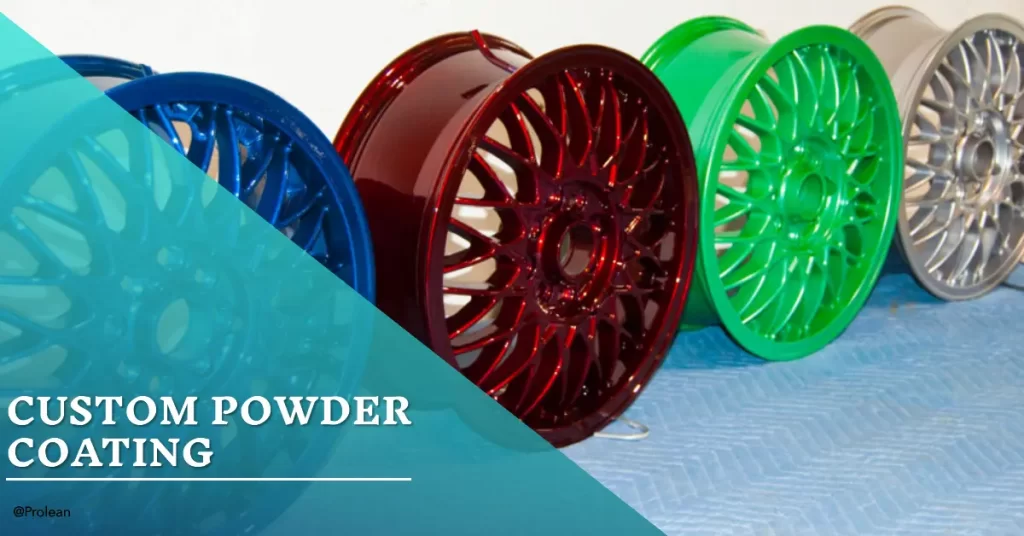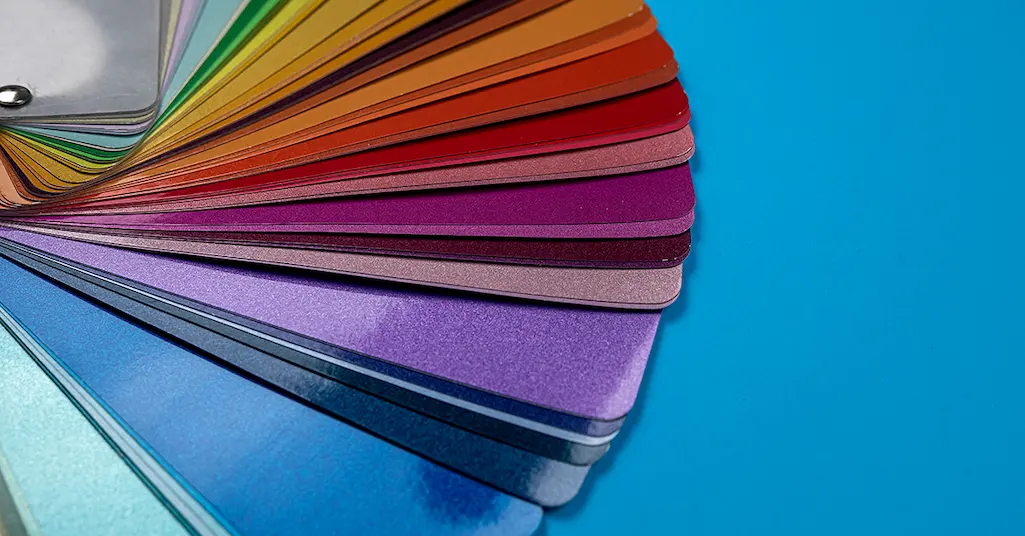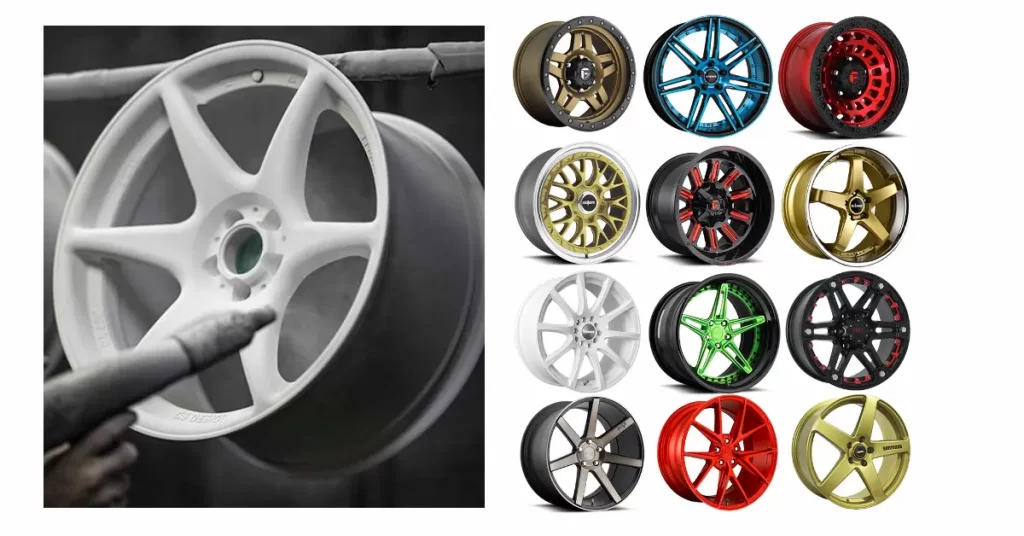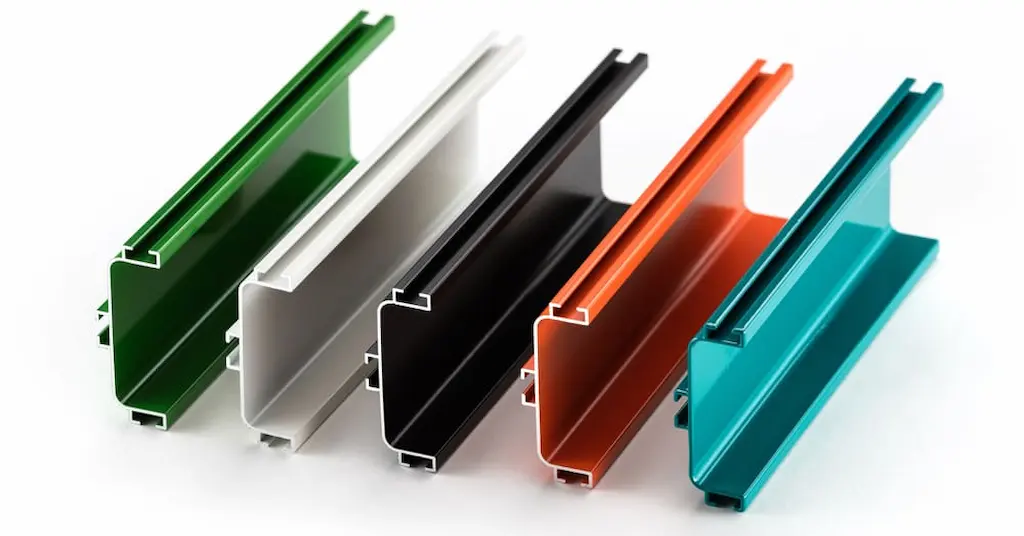
The powders used in the coating process include thermoplastic or thermoset resins, hardeners, curing agents, pigment or dyes, fillers, and additives. Their proportions in coating powders determine the properties and durability of the coating layer. The right proportions and useful additives in powder allow for custom powder coating according to the application requirements, such as corrosion resistance, wear resistance, color, and surface texture.
This article will elaborate on the custom colors, properties, and application examples of powder coating in detail.
What is Custom Powder Coating?
Imagine matching the color or texture of your brand logo on the manufactured parts, which is one primary example of what the custom coating means. However, it is not only about coating colors but achieving custom thickness, texture, and other finishing characteristics. Additionally, this approach also focuses on cost-effectiveness without compromising the quality of the coating layer. Some examples of custom coating are automotive wheels, outdoor furniture, marine parts, and electrical closures.

Custom powder coating colors
Furthermore, below is the list of common powder bases used in the custom powder coating;
- Epoxy
- TGIC Polyester
- Hybrid (Epoxy-polyester)
- Polyurethane
- Acrylic
There are different standards for custom color powder coating, such as the RAL color system, Pantone Matching System (PMS), and British Standard (BS) 381C. Among these, RAL is the most common one. It contains “color codes” for individual color options. You can check how different color options are listed under the RAL system in this “ RAL System Color Chart” here.
Try Prolean Now!
Steps of Custom Powder Coating Process
There are three main stages for producing custom powder-coated parts, surface preparation, customization of powder, and application of powder charge & curing. Let’s discuss each of them in brief;
Step 1: Pre-surface Treatment
The uniformity and texture of substrate parts directly influence the powder coating results. Therefore, preparing the surface is a crucial step. It involves mechanical and chemical treatments. First, deburring, sanding, bead blasting, and other similar mechanical abrasion processes are employed to remove the surface irregularities and produce a smooth surface. Following that, the chemical cleansing and rinsing removes all debris, oils, and other contaminations.
In custom color powder coating, some areas or portions might need to be covered to leave them for other coatings or colors. For example, a chair frame might need one color on its legs, another on the armrest, and thread holes uncoated. So, use heat-resistant plunges and covers as a mask for those areas that need to be left uncoated.
Step 2: Customizing the Powder Composition
This is the crucial step that decides the color and other characteristics of the final coating layer. You need to mix the base resin, pigment type, or other additives in the correct proportion based on your custom requirements, such as color, hardness level, toughness, dielectric strength, etc.
Step 3: Electrostatic Deposition and Thermal Curing
Next, apply the custom charge of coating powder either with electrostatic spraying or fuse bed deposition method. The atomized powder reacts with the surface and forms a magnetic bond. Later, curing at high temperatures stabilizes that bond.
High-temperature curing involves heating for a pre-determined period in an oven or similar mechanism, where the temperature can go up to 400°F. Advanced curing technologies like localized heating and diode lasers are popular among manufacturers of high-quality powder coatings. However, diode lasers are highly recommended for polymerizing coatings as they provide the necessary focused heat to the surface.
Furthermore, other curing methods like grouped Pulses Impingement (GPI) and Consecutively Pulsed Curing (CPC) are efficient for photopolymerization coating.
Custom Powder Coated Wheels and Rims
Powder coating is applied to the automotive wheels for protection from the environment, their durability, and appearance. Aluminum alloy wheels, rims, and steel hubs are finished with a thick layer as these automotive parts are more prone to corrosion and degradation, the reason is that they interact with mud, water, greases, etc. than any other auto parts. Consequently, they are also responsible for withstanding the high stresses.

Custom powder coated wheels and rims
For custom powder coated wheels and rims, the combination of powder resins, additives, and color pigments needs to be mixed according to end requirements for their functionality.
- Corrosion Protection: The coat prevents corrosion and rust in environments with high moisture and road salt.
- Longer Life Spans: Powder-coated rims and wheels last for up to 20 years with proper maintenance. It resists chipping, scratching, and fading.
- Custom Appearance: The right combination of powder coating charges allows for custom finish and appearance, matte, gloss, metallic, and textures with unique color options.
- Cost-effective: The simple setup and durability of the coating make the custom powder coating process a cost-effective technique.
Moreover, both spraying and immersion in charged powder are suitable for custom powder coated rims, wheels, and other similar auto parts. The coating protects from UV rays, oxidation of the metal surface, and fading of colors along with many other environmental conditions.
How Much Does a Custom Powder-Coated Wheel Cost?
Like every other powder coat process, the cost of custom-coated automotive wheels depends on factors like base resin type, powder constituents, and desired layer thickness. Additionally, the manufacturing method employed also affects the price. For instance, the die-casting rims might require more post-processing than CNC machining, increasing the cost.
Typically, custom powder-coated wheels in small to medium-volume finishing might cost anywhere between $50 to $ 300, whereas a coat of rim is approximately cost $30 to $ 150.
Custom Aluminum Powder Coating
You can finish aluminum extrusion, CNC machined, die-casted, sheet metal, and all other types of manufactured surfaces with personalized specifications, whether a custom appearance or thickness. It is mainly used for surface protection of aluminum automotive components, electrical enclosures, aircraft parts, decorative items, and other applications.

Powder-coated aluminum parts
If we compare aluminum powder coating with paint, it offers significantly higher resistance toward scratch, wrapping, and corrosion. Additionally, powder-coated aluminum surfaces do not require any further paints or dyes.
The following are some examples of custom aluminum coating;
- The automotive engine covers for custom finishes and high durability
- Anti-reflective coating on aircraft panels
- Aesthetically pleasing window frames
- Laptop bodies and phone cases
- Heat sink coatings for optimal heat dissipation
- Boat hulls and marine equipment to protect from saltwater exposure
Read more: Anodizing vs Powder Coating
Try Prolean Now!
Are you Looking for Custom Powder Coated Parts?
If you are looking for a durable alternative to plastic dips and solvent paints, custom powder coating is the best choice. Not only the custom physical and mechanical properties, but you can choose the unique appearance with the powder coating finishes. However, the customization heavily depends on the expertise of engineers and operators as it requires a deep understanding of powder material composition, atomization of powder, and curing practices.
At ProleanTech, We have professionals who have more than two decades of experience working on diverse decorative and functional coating projects. Our custom powder coating services can achieve any custom texture and color.
FAQs
How to optimize powder coating for distinct material surfaces?
The uniformity of surface, the right powder types, and curing for strong adhesions are essential to optimize the powder coating for different material surfaces.
Can I achieve multiple powder-coating colors in a single plane?
Yes, you can apply multiple powder-coating colors on a single plane using masking techniques. You can mask the areas while applying one section and repeat the techniques for multiple colors.
Does curing affect the custom powder coating colors?
Yes, curing affects powder coating colors. Incorrect curing temperatures and duration cause discoloration, fading, and uneven finishes.




0 Comments